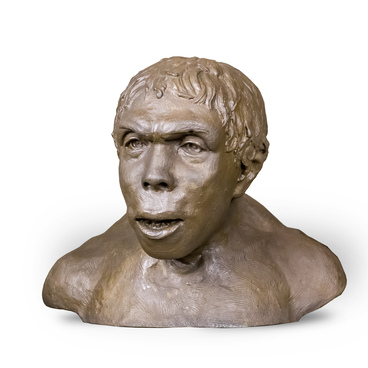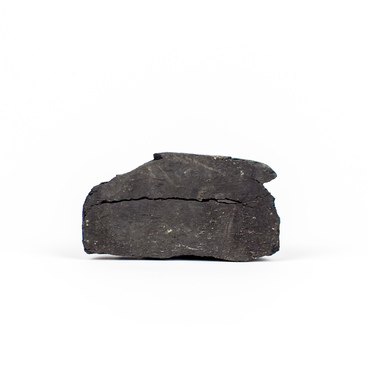Ulemosaurus is a genus of extinct ancient reptiles that lived in the middle Permian period, about 265 million years ago. They were found most often in the Urals. These dinosaurs got their name from the Ulema River in Tatarstan, near which scientists first discovered their remains. In addition, the only complete skeleton was found in the Apastovsky district of Tatarstan, near the Isheevo village.
The skull length of the dinosaur of this species exceeded 40 centimeters. Along the upper edges of the orbit, there were thickenings and overgrowths on the bone. They probably protected the eyes from being injured. The front teeth of the Ulemosaurus were larger than the back ones, the jaws closed tightly. These dinosaurs could probably slightly grind the food before swallowing it, but they did it with their front teeth, not the back ones, like most vertebrates.
Ulemosaurus ate rotten plant matter, which usually accumulated in lagoons and river backwater. That’s why they lived near water, and now their remains are found by rivers and lakes. The dead parts of plants were softer than the fresh ones, and they almost didn’t need to be chewed. At that time, dinosaurs’ jaws were poorly adapted to breaking down hard food.
Ulemosaurus reached the length of 4–5 meters with a tail and weighed about a ton. Their forelegs were longer and more powerful than their hind legs, and their shoulder girdle was well-developed. However, their widely set limbs did not allow them to run fast. Therefore, these animals moved very slowly and clumsily. Probably because of this, they became prey of the semi-aquatic predators Titanophoneus: they were much smaller than Ulemosaurus but could attack them in groups.
In the 1980s, Ulemosaurus was considered a type of other dinosaurs — Moschops, which lived mainly in Southern Africa. They looked similar and belonged to the same order of herbivores — Tapinocephalia. It is unknown how many species were in this order since sometimes scientists described single-species individuals of different sexes and ages under different names. The same happened with Ulemosaurus. Then paleontologists found out they were more primitive than Moschops.
The skull length of the dinosaur of this species exceeded 40 centimeters. Along the upper edges of the orbit, there were thickenings and overgrowths on the bone. They probably protected the eyes from being injured. The front teeth of the Ulemosaurus were larger than the back ones, the jaws closed tightly. These dinosaurs could probably slightly grind the food before swallowing it, but they did it with their front teeth, not the back ones, like most vertebrates.
Ulemosaurus ate rotten plant matter, which usually accumulated in lagoons and river backwater. That’s why they lived near water, and now their remains are found by rivers and lakes. The dead parts of plants were softer than the fresh ones, and they almost didn’t need to be chewed. At that time, dinosaurs’ jaws were poorly adapted to breaking down hard food.
Ulemosaurus reached the length of 4–5 meters with a tail and weighed about a ton. Their forelegs were longer and more powerful than their hind legs, and their shoulder girdle was well-developed. However, their widely set limbs did not allow them to run fast. Therefore, these animals moved very slowly and clumsily. Probably because of this, they became prey of the semi-aquatic predators Titanophoneus: they were much smaller than Ulemosaurus but could attack them in groups.
In the 1980s, Ulemosaurus was considered a type of other dinosaurs — Moschops, which lived mainly in Southern Africa. They looked similar and belonged to the same order of herbivores — Tapinocephalia. It is unknown how many species were in this order since sometimes scientists described single-species individuals of different sexes and ages under different names. The same happened with Ulemosaurus. Then paleontologists found out they were more primitive than Moschops.



